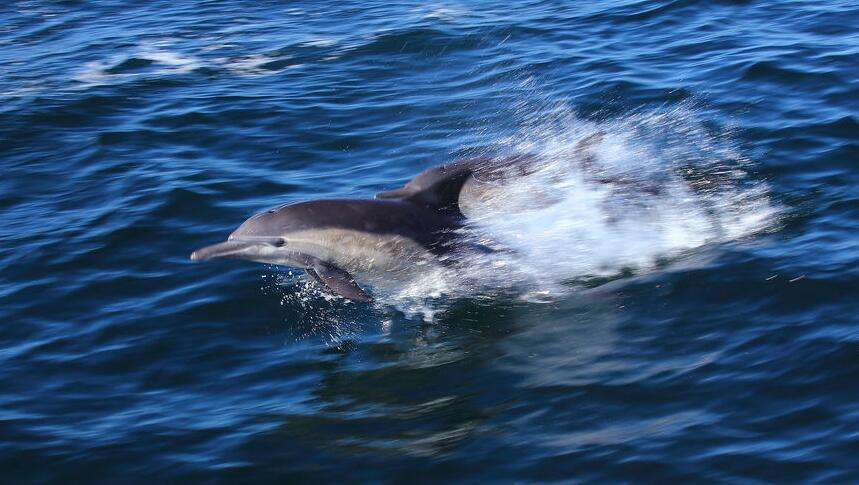Delphinus capensis
IUCN
LCBasic Information
Scientific classification
- name:Delphinus capensis
- Scientific Name:Delphinus capensis,Long-beaked common dolphin, Common Dolphin,Toothed dolphin, tropical dolphin, long-beaked dolphin
- Outline:Cetacea
- Family:Odontoceti Delphinidae Dolphin
Vital signs
- length:190-206cm
- Weight:80-150kg
- lifetime:About 40 years
Feature
The basic appearance is similar to that of the short-beaked dolphin.
Distribution and Habitat
Mainly distributed in the tropical waters of the Indian Ocean and the Pacific Ocean, the northwest Pacific Ocean is concentrated in the East China Sea, the South China Sea, and the Sea of Japan.
Origin (sea): Argentina, Brazil, Chile, Angola, China, Colombia, Congo, Bangladesh, Cote d'Ivoire, North Korea, Djibouti, Eritrea, French Guiana, Gabon, Gambia, Ghana, Guyana, Cambodia, Hong Kong Special Administrative Region of China, India, Indonesia, Iran, Japan, Kenya, Madagascar, Malaysia, Maldives, Mauritania, Mexico, Mozambique, New Caledonia, New Zealand, Oman, Pakistan, Peru, South Korea, Saudi Arabia, Senegal, Singapore, Somalia, South Africa, Sri Lanka, Suriname, Taiwan Province of China, Thailand, United Arab Emirates, Tanzania, the United States, Uruguay, Venezuela, Vietnam, Western Sahara, Yemen.
It seems to prefer shallow warm water, generally active in shallow continental shelf areas near the coast with a depth of about 180 meters or more, and rarely found around oc
Appearance
The adult length is 1.9~2.06m. The appearance is basically the same as that of a short-beaked true dolphin. The beak is longer, with the beak length being 6.9%~9.7% of the body length; the body is longer and slender; the forehead is lower and flatter; the dorsal fin is high and slightly sickle-shaped. There are also cross-shaped spots. The color spots of long-beaked dolphins appear to be slightly weaker than those of short-beaked dolphins. The chest spot is darker, so the contrast with the shawl is smaller. The flipper-to-anal stripes are usually moderately or well developed. The stripes from the chin to the flippers meet the lip spots at the corners of the mouth or slightly in front of the corners of the mouth, and are still wider in front of the eyes. The eye spots are lighter and less conspicuous than those of short-beaked dolphins. The dorsal fin and flippers have only occasional faint light patches.
The rostrum of the skull is long and narrow, the dorsoventrally is very flat, a
Details
Long-beaked common dolphin, with two subspecies, is a warm-water species.

Long-beaked dolphins are social mammals. Sometimes more than 1,000 individuals form a large dolphin group, and a smaller dolphin group can also be composed of 10 to 30 closely related dolphins.
At the surface, long-beaked dolphins are energetic, jumping in and out of the water in a series of high-speed leaps. Like most dolphins, long-beaked dolphins can leap vertically, soaring out of the water and landing in the water with a dramatic splash. They can swim at speeds of more than 40 kilometers per hour. When chasing prey, they can usually dive for 2 to 3 minutes and reach a maximum depth of 280 meters.
Long-beaked dolphins in different regions have different diets. For example, those in the Brazilian waters prefer cephalopods; those in Southern California mainly feed on sardines, anchovies, saury, small bonito and squid; those in southern Africa mainly feed on sardines, anchovies, squid and a variety of other fish, including snakenose fish.
The teeth and gums of the long-beaked dolphin are covered with barnacles of the symbiotic cirripeda, and the gastrulation is parasitized by the typical Anisakid nematode (A.typica).
Spring and summer are the breeding seasons of the long-beaked dolphin. One calf is born each time. Female dolphins that have reached sexual maturity give birth every 2 to 3 years. The gestation period is 9 to 11 months, and the lactation period is about 6 months. The sexual maturity period varies from region to region. Generally speaking, it may take 2 to 7 years for males and 3 to 12 years for females. The newborn dolphin is 80 to 100 cm long and weighs about 10 kg.
There is no global statistics on the total number of long-beaked dolphins. The abundance of populations in various regions are as follows: According to survey data from 1999 and 2005, the population in the northern waters of California is about 11,000~49,000 (CV = 50%), with an average of 22,000. In the waters from southern California to the Gulf of Mexico, according to an estimate in 1995, there are 55,000 in the Gulf of Mexico and 69,000 along the coast of southern California. In 2007, the population along the coasts of Oregon and Washington was about 15,334. In 1990, there were an estimated 15,000~20,000 along the coast of South Africa. There is still no data on the abundance of the subpopulation (D.c.tropicalis) that is widely distributed in the Indian Ocean and the western Pacific. Long-beaked dolphins are often caught by trawl nets in Chinese waters, and there are reports of being caught by gillnets, trawl nets, and purse seine nets in other countries.
Listed in Appendix II of the Convention on International Trade in Endangered Species of Wild Fauna and Flora (CITES).
Listed in the IUCN Red List of Threatened Species: Data Deficient (DD), 2008 assessment.
Listed in the National List of Key Protected Wildlife: National Class II Protected Animal (effective December 10, 1988, all genera and species of the family Delphinidae).
Listed in Class II of the National List of Key Protected Wildlife in China.
Protect wild animals and stop eating game.
Maintaining ecological balance is everyone's responsibility!








